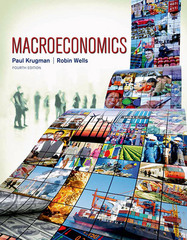Question
Study CaseResearch into the soft drink market indicates that the two firms compete by selectingquantities (Cournot competition). Soft drinks are regarded as a homogeneous good
Study CaseResearch into the soft drink market indicates that the two firms compete by selectingquantities (Cournot competition). Soft drinks are regarded as a homogeneous good byconsumers, and inverse demand in the market is estimated to be, P = 6 ? Q/100,000, where P represents the price of a bottle of soft drink, and Q is the total number of bottles sold per year. At present soft drinks sell for $3.80 a bottle. Bubbles PLC produces 140,000 bottles peryear, paying $56,000 in bottle tax. CarbonCorp produces 80,000 bottles and pays $32,000.It is estimated that it costs Bubbles PLC $2.00 per bottle of soft drink produced, while producing a bottle of soft drink cost CarbonCorp $2.60. The fixed costs of production can be neglected in this analysis.Q1: Using the information provided in the scenario, derive a total cost function foreach soft drink producer for the case in which the government levies a tax of $1.00 perbottle. Note that a firm's marginal cost will be the sum of its cost of producing a bottle, and the tax that it must pay to the government on each bottlesold.Q2: Using the cost functions from step 1, derive a profit function for each firmQ3: Derive each firm's best-response functionQ4: Solve the best-response functions simultaneously to find the equilibrium quantitiesfor each firm.Q5: Find the equilibrium price and tax revenueThank you so much for your help.

Step by Step Solution
There are 3 Steps involved in it
Step: 1

Get Instant Access to Expert-Tailored Solutions
See step-by-step solutions with expert insights and AI powered tools for academic success
Step: 2

Step: 3

Ace Your Homework with AI
Get the answers you need in no time with our AI-driven, step-by-step assistance
Get Started


